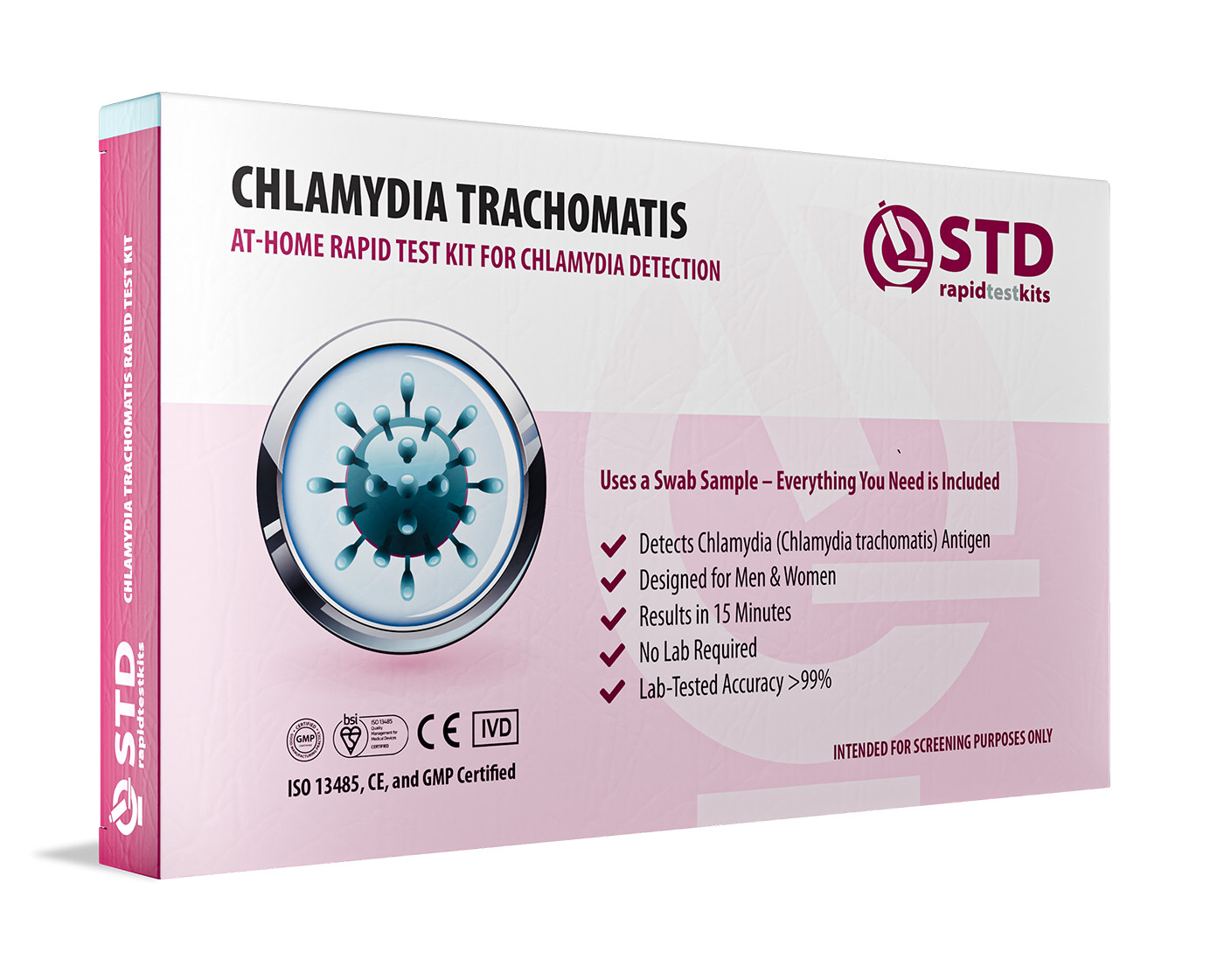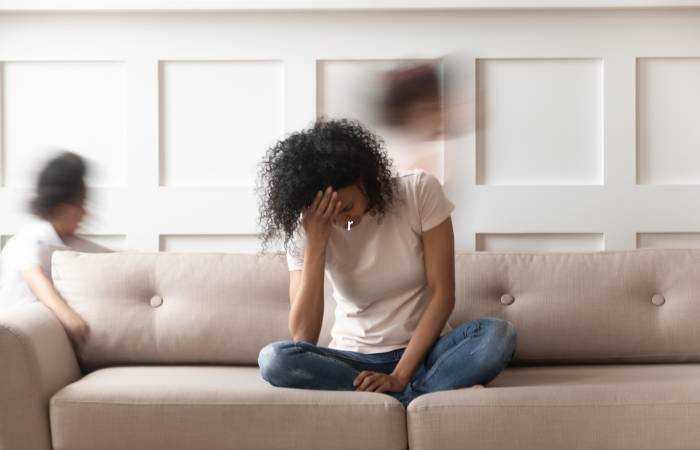Who Needs STD Testing and How Often? A Friendly Breakdown You Can Trust
When Pleasure Turns to Panic: Understanding the STD Risks of Casual Sex
Casual sex is supposed to be low-pressure, but that illusion quickly crumbles when health enters the picture. While it's easy to feel invincible in the moment, the reality is that every sexual encounter carries risk. According to the Centers for Disease Control and Prevention (CDC), nearly 1 in 5 people in the U.S. has a sexually transmitted infection at any given time. That’s more than 68 million people, and many of them don’t even know they’re infected.
Let’s paint the picture. Imagine having a seemingly perfect hookup. You used protection, maybe. Or maybe it slipped off. Or maybe it was oral, and you didn’t think that “counted.” A few days pass. Then, itching. Burning. A strange discharge. Or nothing at all, until a routine test delivers a shocking result.
And STDs don’t wait for relationships to start. In fact, a large percentage of transmissions happen during casual encounters because people assume short-term means low risk. But short-term trust doesn’t cancel out long-term consequences. Even scarier? Some STDs like chlamydia and gonorrhea can be completely asymptomatic, especially in women. That means you could carry and pass the infection without ever knowing.

The Unspoken Fallout: How Real Lives Are Changed by STD Diagnoses
There’s no better way to understand the consequences than to hear them straight from the people who lived them. Below are anonymous accounts, based on real interviews and public confessions, of individuals who contracted STDs after casual sex.
“I Thought It Was Just Razor Burn. It Was Herpes.”
Tasha, 24 had just moved to LA. A Tinder date turned into a hotel rendezvous. "We used a condom for sex, but not for oral," she recalls. A week later, she noticed a painful cluster near her genitals. “I thought it was razor burn. Then I thought it was an ingrown hair. I never thought it was herpes.”
Her diagnosis came fast, and so did the shame. “I couldn’t look in the mirror. I felt disgusting, like I was permanently marked,” she says. Her partner ghosted her. Friends didn’t understand. "I spiraled into depression. I felt like my body betrayed me."
Today, she’s on suppressive medication and in a relationship, but the scars, both emotional and physical, linger.
“He Said He Was Clean. He Wasn’t.”
Jason, 29, met “M” at a music festival. “We danced all night, made out, ended up in my tent,” he says. “She said she got tested last month. I believed her.”
A month later, he developed burning during urination. It was gonorrhea, and it didn’t end there. “I told her, and she said she was clean. Then she blocked me. It was humiliating.”
What hit harder than the infection? The trust. “I used to think I had good judgment. That shook me.”
“I Waited Too Long to Get Tested. Now I’m Infertile.”
Elena, 33, thought her irregular periods were from stress. But when she finally saw a doctor, she got a diagnosis that floored her: pelvic inflammatory disease (PID) caused by untreated chlamydia.
“The infection had spread to my uterus and fallopian tubes. They said it was too late, I may never have kids.”
Her partner? A summer fling from four years ago. They never talked again. “I thought I dodged the bullet because I never had symptoms. Turns out, the bullet hit me silently.”
Order Now $33.99 $49.00 Check Your STD Status in Minutes
Test at Home with Remedium
Chlamydia Test Kit




The Ripple Effect: Physical, Emotional, and Social Costs of STDs
Getting an STD isn’t just a medical problem, it’s an emotional earthquake. Here's what it can shake up:
- Mental Health Toll: Anxiety, shame, depression, and suicidal thoughts are common after diagnosis. Many feel isolated or “damaged.”
- Relationship Challenges: Disclosing an STD can tank new relationships, or strain existing ones.
- Healthcare Costs: Without insurance, treatment can be pricey. Even with insurance, recurrent testing, prescriptions, and follow-ups add up.
- Long-Term Health Effects: Some untreated STDs can lead to infertility, chronic pain, or even increased risk for certain cancers and HIV.
People often downplay casual sex risks because the sex is “just for fun.” But your body doesn’t recognize emotional detachment, it only knows whether it’s been exposed. And while fear is real, ignorance is deadlier.
Testing, Treatment, and Trust: The Way Forward After a Scare
Here’s the good news: STDs are manageable, many are curable, and all are diagnosable, if you actually get tested. Waiting until symptoms show up? That’s like waiting for the fire alarm instead of installing a smoke detector. Regular testing is your best friend, especially if you’re sexually active with new or multiple partners. And thanks to science (and some amazing services like STD Rapid Test Kits), you can now test from the privacy of your own home, no awkward clinics, no judgmental stares, and results in as little as 20 minutes.
Pro tip: Make testing part of your routine, just like brushing your teeth or booking your annual physical. And let’s be real: if you can ask someone their sign or their body count, you can ask about their STD status.
Hard Numbers, Hard Truths: What the Data Says About Casual Sex and STDs
Let’s back the horror stories with hard science, because personal experiences, while compelling, are just the tip of the STD iceberg. According to the CDC’s 2023 surveillance report:
- Over 2.5 million cases of chlamydia, gonorrhea, and syphilis were reported in the U.S. in a single year.
- Young people (ages 15–24) accounted for nearly half of all new STD infections, despite representing only a quarter of the sexually active population.
- Condom use among singles has dropped steadily since 2010, especially in casual encounters.
- Oral sex is a major blind spot, nearly 70% of adults don’t realize STDs can be spread this way, leading to infections like oral herpes, gonorrhea of the throat, and even syphilis.
A study in the Journal of Adolescent Health found that individuals who reported multiple casual sex partners were twice as likely to delay STD testing, often because they feared judgment, inconvenience, or didn’t perceive themselves as “at risk.” Even scarier: some infections like HIV and hepatitis B can lie dormant for months or years without symptoms. That’s why regular testing is crucial, not just reactive, but proactive.
From the Experts: What Doctors and Therapists Want You to Know
We spoke to healthcare professionals and therapists who specialize in sexual health and relationships. Their insights offer a roadmap for prevention, healing, and empowerment.
Dr. Lena Martinez, Infectious Disease Specialist
“People think STDs are something that happens to 'other' people, reckless or dirty people. That stigma is not only false, it’s dangerous. STDs can affect anyone who’s sexually active. One mistake doesn’t define your worth, but it does demand action.”
She recommends testing every 3–6 months if you’re having casual sex, especially with multiple partners. “And don’t assume you’re safe just because you used a condom. Some infections, like herpes and HPV, can spread through skin-to-skin contact.”
Jordan Wu, Sex Therapist
“The emotional impact of an STD diagnosis is often more traumatic than the physical symptoms. People feel ashamed, unworthy, unlovable. But shame thrives in silence. Talking about it, with your partner, a therapist, or even a support group, can be the first step toward healing.”
Wu also notes the empowerment of knowledge. “Getting tested doesn’t make you promiscuous. It makes you responsible. And sexy, honestly.”
Anonymous Nurse Practitioner
“I’ve seen people cry harder over a positive STD result than they did over breakups. The fear is real, but so is the freedom that comes after treatment. The worst thing you can do is wait.”

Casual Sex Isn’t New, But Our Understanding of STDs Has Evolved
Casual sex isn’t a 21st-century invention. From the free love of the 1960s to the disco-fueled hookups of the ‘70s and the AIDS epidemic of the ‘80s, each generation has grappled with how to balance pleasure and risk.
In ancient Rome and Greece, brothels were common, and STDs were rampant, though poorly understood. By the 18th century, syphilis had become so widespread in Europe it was nicknamed “The French Disease,” though each country blamed its enemies.
The 1980s brought the HIV/AIDS crisis, which forever changed how we talk about sex, risk, and stigma. What began as a mysterious illness affecting mostly gay men turned into a global pandemic, and a turning point for sexual health education.
Today, we know more than ever. We have vaccines (for HPV and hepatitis B), PrEP for HIV prevention, rapid tests, and medications that can suppress or cure many infections. Yet casual sex still carries risk, not because we lack tools, but because we often don’t use them.
What’s Next? The Future of Safe Hookups in a Post-Pandemic World
The COVID-19 pandemic changed everything, including how we think about health, risk, and personal space. Ironically, many people became more cautious about viruses like COVID while remaining nonchalant about sexually transmitted infections. But new tech and cultural shifts are changing the game:
- STD testing is going digital. Services like STD Rapid Test Kits let you test from home, no appointments, no shame.
- Sexual health conversations are becoming more mainstream, especially among Gen Z, who are statistically more likely to ask partners about testing and status.
- Dating apps are evolving. Some now include options to display STD testing status or vaccination records.
Experts predict that in the next 10 years, at-home testing will become as common as birth control, not just a backup plan, but a normalized part of hookup culture. The takeaway? The future isn’t just about avoiding infection, it’s about building a new culture of transparency, testing, and trust.
Real Life, Real Stakes: How to Protect Yourself Today
Knowing the risks is only half the battle. Here’s how to turn that knowledge into action:
Get Tested Regularly
If you’re having casual sex, test every 3–6 months. More often if you have multiple partners. STD Rapid Test Kits makes it private and fast, no excuses.
Use Protection, And Use It Right
Condoms and dental dams aren’t perfect, but they significantly reduce risk. And yes, use them during oral too.
Don’t Assume, Ask
“What’s your STD status?” isn’t rude. It’s responsible. If someone’s offended, that’s a red flag.
Know the Symptoms, And When to Ignore Them
Some STDs are sneaky. You might not feel anything until it's too late. If you notice pain, discharge, sores, rashes, burning, or irregular periods, don’t wait. Test now.
Treat Promptly and Follow Through
Some STDs, like chlamydia or gonorrhea, are curable with antibiotics, but only if you finish your treatment. Others, like herpes, require long-term management. Either way, ghosting your doctor is not an option.
Check Your STD Status in Minutes
Test at Home with Remedium3-in-1 STD Test Kit

 For Men & Women
For Men & Women Results in Minutes
Results in Minutes No Lab Needed
No Lab Needed Private & Discreet
Private & DiscreetOrder Now $69.00 $147.00
For all 3 tests
Sex, Shame, and Systems: How Casual Sex and STDs Impact Healthcare and Society
While STD infections are deeply personal, the ripple effects go far beyond the bedroom. They place enormous strain on healthcare systems, public health infrastructure, and social norms around sex and morality.
Healthcare Burden
In the U.S. alone, STDs cost the healthcare system over $16 billion annually, according to the CDC. That includes:
- Clinic visits and lab testing
- Medications (including expensive antivirals or antibiotics)
- Hospitalizations for complications like pelvic inflammatory disease (PID) or neonatal infections
- Long-term treatment for chronic infections like HIV
Many of these costs are avoidable. But because casual sex often comes with rushed decisions and after-the-fact regret, testing and treatment get delayed. The result? More severe cases and more partners unknowingly infected.
Employer and Insurance Pressures
Untreated STDs can lead to time off work, missed productivity, and even workplace stigma. Some people avoid seeking treatment altogether if they’re on their parents’ insurance or fear their employer might find out. The shame is systemic, and it discourages prevention.
Public Health Programs
Public STD clinics are underfunded, understaffed, and overrun. And with more people avoiding in-person care due to privacy concerns, these systems are stretched thin. That's where at-home STD testing becomes a powerful tool, not just for individuals, but for relieving public health bottlenecks. By decentralizing testing, companies like STD Rapid Test Kits are helping alleviate pressure on clinics while empowering people to monitor their health discreetly.

From Whisper Networks to Online Forums: More True Stories of STD Encounters
If you want the raw, unfiltered truth about casual sex and its consequences, online communities are full of it. Reddit’s /r/STD or anonymous Twitter confessions tell stories that public health pamphlets never will.
“I got chlamydia twice from the same guy. I was too scared to confront him.”
A user named “NeedNewStandards” shared how fear of losing a hookup turned into a year-long struggle with recurring infections. “I thought if I pushed him to get tested, he’d ghost me. Spoiler alert: he did anyway.”
“I gave someone herpes, and they didn’t hate me.”
Another user posted their relief after finally disclosing their herpes status before a date. “I expected disgust. But they said, ‘Thank you for telling me. Let’s just use protection.’ That kind of compassion blew me away.”
These stories are everywhere. And they prove one thing: you’re not alone, no matter what’s living in your bloodstream.
STD Myths That Still Need to Die (Like, Yesterday)
Even with all the awareness campaigns, the internet still circulates STD myths like urban legends. Let’s kill a few of the most dangerous ones.
“If they look clean, they probably are.”
You cannot see HIV. You cannot feel chlamydia. And herpes doesn't always show symptoms. The only way to know is to test.
“STDs only happen to people who sleep around.”
False. You can get an STD the very first time you have sex. It's about exposure, not a number.
“Oral sex is safe sex.”
Safer? Yes. Safe? Not even close. Herpes, gonorrhea, syphilis, HPV, and more can be transmitted orally.
“If I had an STD, I’d know.”
Many STDs are completely asymptomatic, especially in their early stages. That false sense of security is what leads to widespread transmission.
“You can’t get an STD if you use a condom.”
Condoms reduce risk, but don’t eliminate it. Skin-to-skin infections like HPV and herpes can bypass latex.
Order Now $129.00 $343.00 Check Your STD Status in Minutes
Test at Home with Remedium
7-in-1 STD Test Kit




For all 7 tests
FAQs
1. I had unprotected sex two days ago. Can I test now?
Not yet. Most STDs have an incubation period. Wait at least 7 days for gonorrhea and chlamydia, 2–4 weeks for HIV, and up to 3 months for syphilis to show up in tests.
2. What if my partner says they’re clean?
Ask for proof, or test together. Trust is not a testing method.
3. I had oral sex. Do I need an STD test?
Yes. Oral sex can transmit gonorrhea, herpes, syphilis, and more.
4. What does herpes feel like?
Usually starts with tingling or burning, followed by blisters or sores. First outbreaks are typically the worst.
5. Can I get an STD from just rubbing/genital contact?
Yes. Skin-to-skin STDs like herpes and HPV can spread that way, even without penetration.
6. I tested positive. Now what?
Take a breath. Start treatment. Inform partners. Most STDs are treatable or manageable.
7. Do I have to tell every partner I've ever had?
You should inform recent partners within the transmission window (usually 3–6 months). Clinics can help you notify anonymously.
8. How accurate are at-home STD test kits?
Very. Brands like STD Rapid Test Kits offer FDA-approved or CE-marked kits with up to 99% accuracy.
9. How often should I get tested?
Every 3–6 months if sexually active with new or multiple partners. Yearly if monogamous.
10. Can I still have sex with an STD?
Yes, with precautions. Many people with herpes, HPV, or HIV still enjoy fulfilling sex lives with honest communication and protection.
This Isn’t About Fear, It’s About Facts (And Taking Control)
If you’ve made it this far, you already know the truth: casual sex comes with real risks, but that doesn’t mean you should live in fear or shame. This is about being smart, honest, and proactive. It’s about taking control of your health without sacrificing your freedom. It’s about testing, treating, talking, and thriving.
Because getting an STD isn’t a death sentence. It’s a wake-up call, and sometimes, a chance to become stronger, braver, and more self-aware than you ever were before. So if you’re even wondering whether you should get tested? You already have your answer. Click. Swab. Wait. Know. Order your at-home STD test today.
Sources
1. STI and HIV Infection Risk Assessment – CDC
2. Heterosexual Casual Sex and STI Diagnosis – PMC










